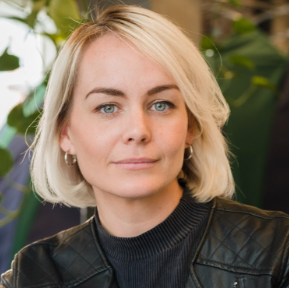Sensitive information and software don’t always go together. Many database solutions don’t give their users the ability to track and monitor data on a granular level. Kintone does.
Starting From the Top Down
Kintone’s permissions are available on four primary levels: Spaces, Apps, Records, and Fields. Each level gives a Kintone user control over what other users (or groups of users) can access, see, modify, or create.
Spaces Level: allows a user to control who can access a Space and the applications inside it.
App Level: allows a user to control who can access, create, modify, or delete applications.
Record Level: allows an user to control who can access, view, or modify specific records.
Field Level: allows an user to control who can view or modify specific fields in a given record.
At first glance, a multi-level permissions control can seem almost excessive. For teams used to Google Doc-style permissions controls (which feature rudimentary categories like “Editor,” “Commenter,” and “Read Only”), Kintone’s granular controls offer a dizzying amount of possibilities.
The Value Of Multi-Level Permissions
So where might a company need a sophisticated permissions control structure? According to Steve Hallam, Kintone’s Software Engineer, a lot of places. “We had a company that wanted their vendors to have access to Kintone’s platform in order to input their data. We’ll call the vendors Vendor A and Vendor B, and our customer Client C. Client C had a few applications that they wanted both their vendors to upload their data to, but they didn’t want Vendors A and B to be able to see each other’s data or account profiles. Using Kintone’s Record permissions, Client C was able to set up a structure that made it so anyone signed in as Vendor A could only see their own records, and the same for Vendor B.”
But that’s only the surface of what Kintone’s permission controls can do. It’s when a user gets to Field levels that the platform really begins to reveal what set it apart.
Controlling Sensitive Data Without Disrupting Workflow
Companies often find themselves in a delicate position when it comes to handling sensitive information; they have records that contain sensitive data only a few employees need to know, but the record contains other data that many employees need to access as part of completing their work.
To mitigate risk, some companies create a list of employees who can access the record and monitor logins. Others give certain employees access and have them pull specific data for their colleagues on request (acting as a sort of human security permission). And then some just provide their all employees with training and hope for the best.
Kintone’s Field permissions eliminate these tedious workarounds by giving people access to just the information they need in any given record. “Field permissions give people the ability to manage what information can be viewed or edited by a certain user or group of users,” Hallam said. “So you can have it so that everyone can see a record but they can’t see all the information in the record. One thing to keep in mind is that sometimes it’s incredibly important for someone to know a field exists even if they can’t see the data in it. For example, someone might need to know that the company has an account with a particular vendor but they don’t necessarily need to know what that account information is.”
How Kintone Stacks Up Against Other No-Code Platforms
Permissions controls don’t have to be complex, but they should be able to handle complex requests. Many no-code platforms offer minimal permission controls with basic permissions that don’t give companies total control over their data. To learn more about how Kintone stacks up against its competition when it comes to security, download our free report on Kintone vs. Airtable.
About the Author
Michelle is the Content Marketing Specialist at Kintone. She is a content marketing expert with several years in content marketing. She moved to San Francisco in 2015 and has experience working in small businesses, non-profits, and video production firms. She graduated in 2012 with a dual degree in Film and English.











